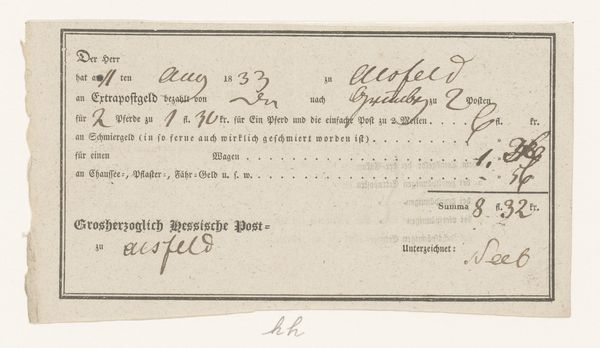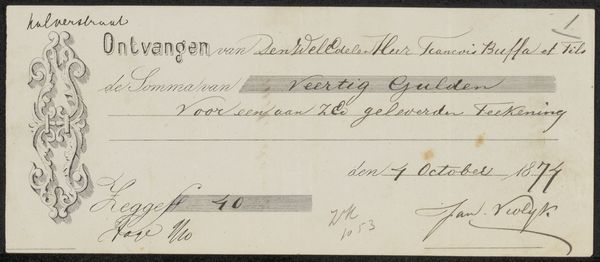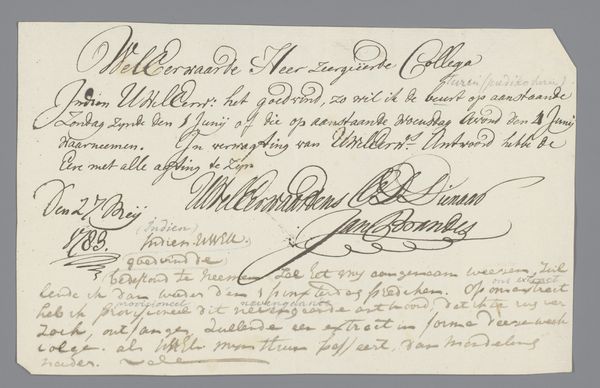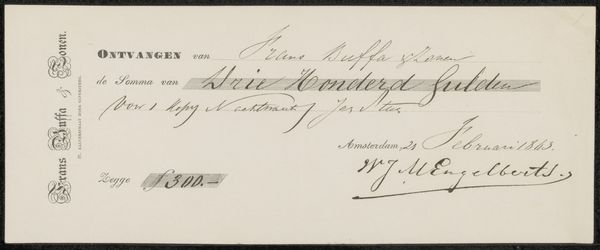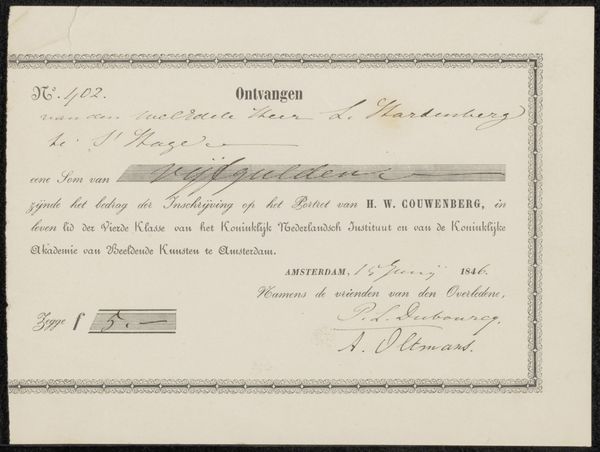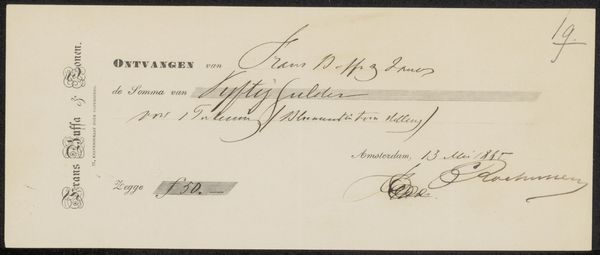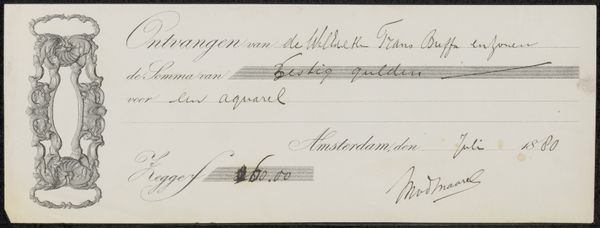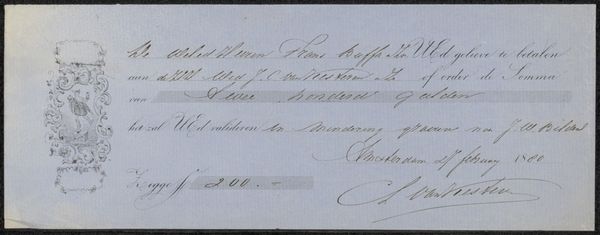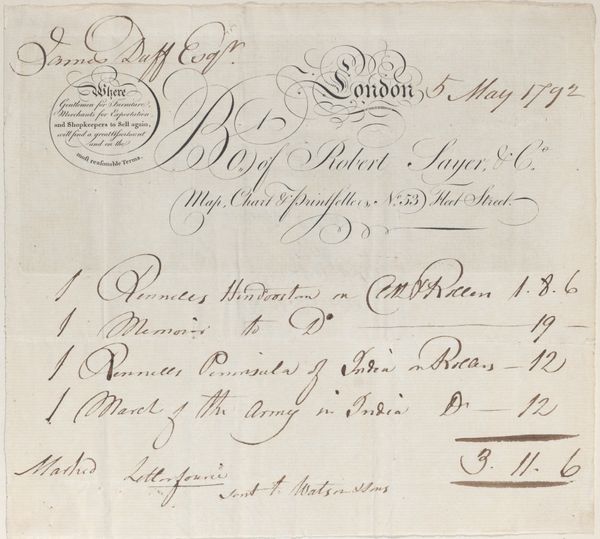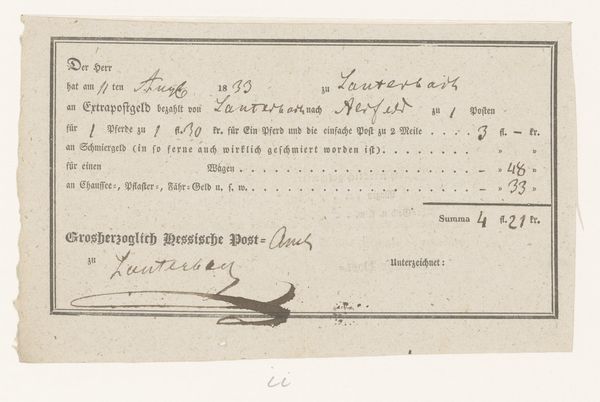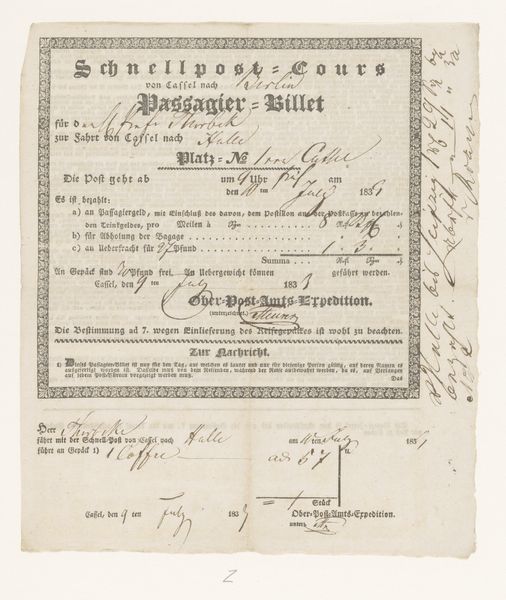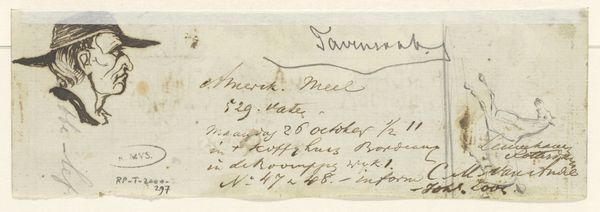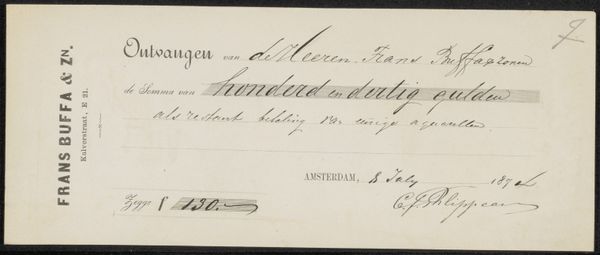
paper
#
paper
#
calligraphy
Dimensions: height 10.3 cm, width 16.4 cm
Copyright: Rijks Museum: Open Domain
Editor: This is a fascinating little document from 1833-1838, simply titled "Document", currently held at the Rijksmuseum. It looks like an old receipt, all handwritten in beautiful script on paper. There's something strangely intimate about seeing someone’s daily transaction recorded like this. What jumps out at you when you look at this? Curator: Well, immediately, I'm drawn to the political implications embedded within such an everyday artifact. This "Document" isn’t just a receipt; it's evidence of socio-economic power dynamics in early 19th-century Germany. Consider the heading: "Grosherzoglich Hessische Post." It speaks of a Duchy-controlled postal service, illustrating centralized authority and control over communication and movement. Editor: That's a great point; I was too focused on the aesthetic! The details about the cost of horses and drivers... Curator: Precisely. Each line reveals the cost associated with travel, a privilege likely afforded only to a certain class. Professor Gottheick, mentioned at the top, presumably had the resources to utilize this service. What does it say about those who couldn’t afford such transportation, about their mobility and access to information? How did their identities and life experiences intersect with these structures of power? Editor: So you are seeing it as more than just accounting but how this shows societal access. How does the calligraphy itself play into this? Curator: The very act of meticulously handwriting this receipt underscores a specific cultural value. It suggests a world where even mundane transactions were conducted with a certain degree of formality and artistry. We might consider it a manifestation of control and class. The elaborate script highlights an exclusive education, making it both an administrative tool and an emblem of distinction. Do you see this document challenging conventional notions of who creates 'art'? Editor: Yes, now I do. I came in thinking of just its historical value, but understanding it as evidence of identity and societal divisions brings a whole new perspective. Curator: Exactly. By questioning and analyzing such items, we actively uncover historical dynamics of class, access, and control woven into the everyday. We learn to understand that everything can have art embedded within, if we try.
Comments
No comments
Be the first to comment and join the conversation on the ultimate creative platform.
